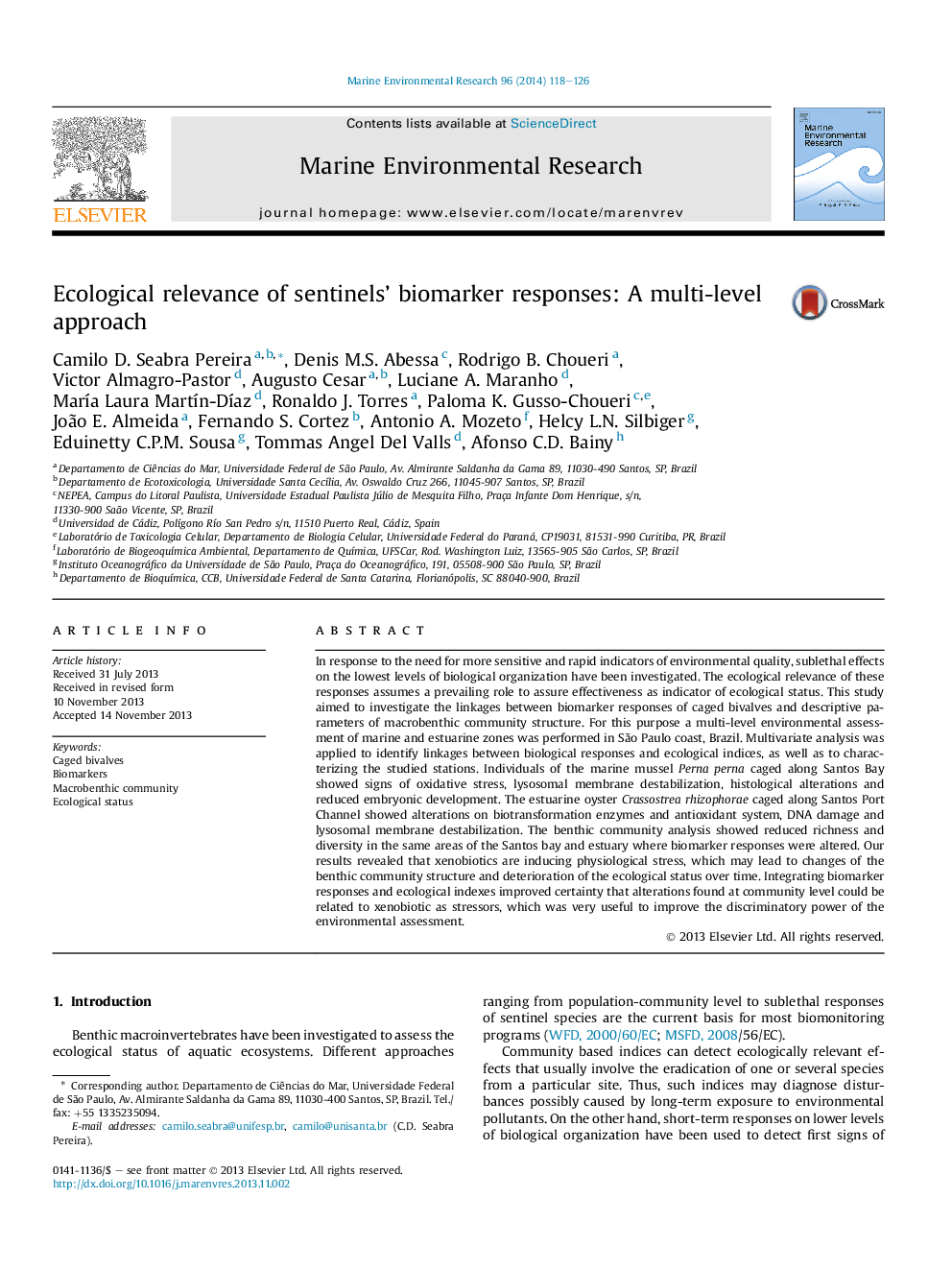| Article ID | Journal | Published Year | Pages | File Type |
|---|---|---|---|---|
| 4550822 | Marine Environmental Research | 2014 | 9 Pages |
•Biomarkers in caged bivalves showed linkages with population-community responses.•Alterations found at community level were related to pollutants as stressors.•This multi-level approach improved the discriminatory power of the environmental assessment.
In response to the need for more sensitive and rapid indicators of environmental quality, sublethal effects on the lowest levels of biological organization have been investigated. The ecological relevance of these responses assumes a prevailing role to assure effectiveness as indicator of ecological status. This study aimed to investigate the linkages between biomarker responses of caged bivalves and descriptive parameters of macrobenthic community structure. For this purpose a multi-level environmental assessment of marine and estuarine zones was performed in São Paulo coast, Brazil. Multivariate analysis was applied to identify linkages between biological responses and ecological indices, as well as to characterizing the studied stations. Individuals of the marine mussel Perna perna caged along Santos Bay showed signs of oxidative stress, lysosomal membrane destabilization, histological alterations and reduced embryonic development. The estuarine oyster Crassostrea rhizophorae caged along Santos Port Channel showed alterations on biotransformation enzymes and antioxidant system, DNA damage and lysosomal membrane destabilization. The benthic community analysis showed reduced richness and diversity in the same areas of the Santos bay and estuary where biomarker responses were altered. Our results revealed that xenobiotics are inducing physiological stress, which may lead to changes of the benthic community structure and deterioration of the ecological status over time. Integrating biomarker responses and ecological indexes improved certainty that alterations found at community level could be related to xenobiotic as stressors, which was very useful to improve the discriminatory power of the environmental assessment.
